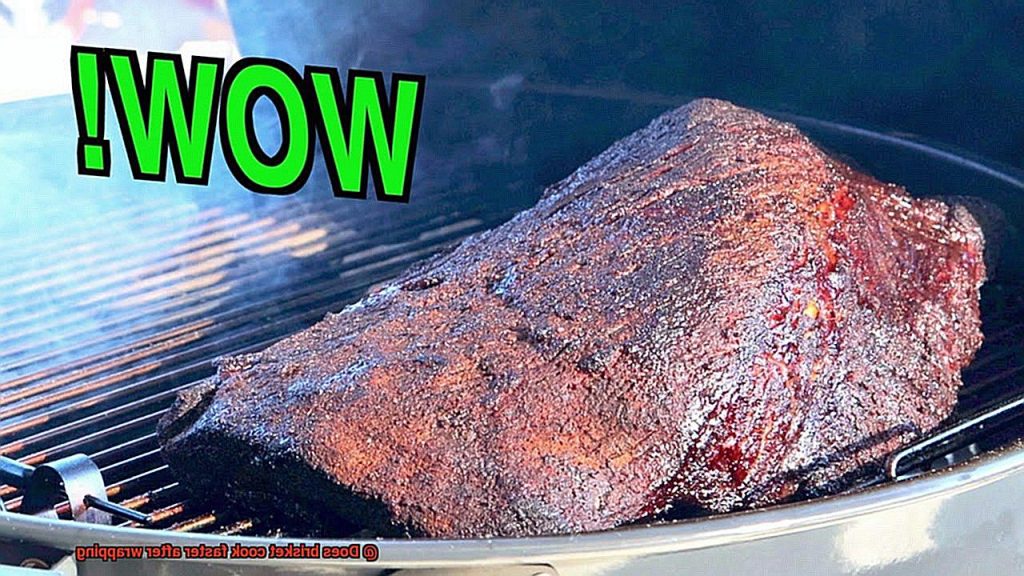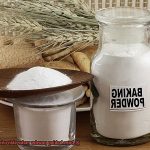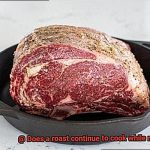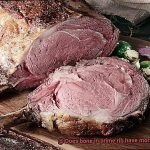Hey there grill masters and pitmasters, are you ready to perfect your brisket game? Cooking brisket is an art form that requires patience, skill, and a whole lot of love. But when it comes to the question of whether wrapping your brisket in foil or butcher paper can speed up cooking time, opinions are divided. So let’s settle this once and for all: does brisket cook faster after wrapping?
First things first, let’s go back to basics. Brisket is a tough yet flavorful cut of beef that needs to be cooked low and slow to break down its connective tissue and fat. This process can take anywhere from 10-18 hours depending on the size of your brisket and the temperature of your smoker. Wrapping your brisket has become a popular technique among pitmasters because it helps retain moisture and tenderness. But does it really make a difference in terms of cooking time?
In this blog post, we’ll explore the pros and cons of wrapping your brisket and how it affects cooking time. We’ll also delve into potential trade-offs such as sacrificing that coveted crispy bark. Whether you’re a seasoned pitmaster or just starting out on your BBQ journey, this post will help you decide if wrapping is the right technique for you and your brisket. So grab yourself a cold one, fire up the smoker, and let’s get smoking.
Contents
Benefits of Wrapping Brisket
For those who love the art of smoking brisket, wrapping is a technique that has gained popularity in recent years. Wrapping involves tightly wrapping the brisket in foil or butcher paper during the cooking process. But what are the benefits of wrapping brisket, and is it worth trying? Let’s explore the advantages and potential downsides of this technique.
One of the biggest benefits of wrapping brisket is its ability to speed up the cooking process. By creating a more humid environment around the meat, wrapping helps to cook it faster. This is especially useful for those who need to cook their brisket in a shorter amount of time. However, it’s important to note that other factors such as size and temperature can also affect cooking time.
In addition to speeding up cooking time, wrapping also helps to retain moisture in the meat. This is crucial since long cooking times can cause brisket to dry out, particularly leaner cuts of meat. Wrapping helps to trap in moisture and prevent it from evaporating, resulting in a juicier end product that is sure to impress your guests.
Another benefit of wrapping is that it can help create a more tender final product. The steam created when the brisket is wrapped helps to break down connective tissue in the meat, resulting in a more tender texture. This can be especially helpful for tougher cuts of meat.
However, there are some potential downsides to consider as well. One concern is that wrapping can result in a softer bark on the outside of the meat. For some barbecue enthusiasts who prefer a firmer bark, this may not be ideal. Additionally, wrapping can create a different flavor profile compared to other techniques such as smoking without wrapping.
Factors That Affect the Cooking Time of Wrapped Brisket
If so, you know that achieving perfectly cooked brisket is an art form that requires careful consideration of several factors. One popular technique for cooking brisket is wrapping it in foil or butcher paper. However, the question remains: how does wrapping impact the cooking time? As a seasoned expert in this field, let me guide you through the various factors that can influence the cooking time of a wrapped brisket.
Let’s start with size and weight. It’s a simple equation – the larger and heavier the brisket, the longer it will take to cook, whether it’s wrapped or not. Additionally, the temperature at which you cook your brisket will impact cooking time. Low temperatures require more time, while high temperatures can hasten the process.
Moreover, different types of smokers and grills have varying heating capabilities and cooking times. Thus, understanding your equipment’s nuances is essential in making adjustments to your cooking times as needed.
The thickness of the wrapping material also plays a crucial role in how quickly your brisket cooks. Thicker foils or papers are more effective at retaining heat, resulting in faster cooking times. However, if the wrapping material is too thick, it can trap too much moisture inside and lead to an overcooked or soggy brisket.
The Pros and Cons of Wrapping Brisket
Smoking brisket is a revered art form in the world of barbecue, and wrapping the meat during the cooking process has become a common technique used by many pitmasters. Wrapping involves encasing the brisket in foil or butcher paper while it cooks, which can enhance tenderness and help retain moisture. However, like any cooking technique, there are pros and cons to wrapping brisket that should be considered before attempting it.
Let’s first explore the potential benefits of wrapping brisket. By creating a more consistent and controlled environment for the meat to cook in, wrapping can potentially speed up the cooking process. The foil or paper acts as a barrier that traps heat and steam around the brisket, resulting in a quicker cook time. Additionally, by retaining moisture, wrapping can result in a juicier, more tender final product.
Despite these benefits, there are some drawbacks to consider as well. If wrapped too tightly, the foil or paper can prevent heat and smoke from penetrating the meat, leading to a longer cooking time. Furthermore, wrapping can cause the bark (the outer layer of the brisket) to become soggy or soft, detracting from its texture and flavor.
When deciding whether or not to wrap your brisket, it’s important to consider your personal preferences and experience level. If you’re new to smoking brisket, experimenting with different techniques (including wrapping) can help you find what works best for you. Experienced pitmasters may already have a tried-and-true method that produces consistently delicious results.
Here are some pros and cons of wrapping brisket to consider:
Pros:
- Can potentially speed up cooking time
- Can help retain moisture for a juicier final product
- Can create a more consistent cooking environment
Cons:
- Can prevent heat and smoke from penetrating the meat if wrapped too tightly
- Can cause the bark to become soggy or soft
- May not be necessary for achieving desired tenderness or flavor
Different Types of Wrapping Materials for Brisket
To achieve a perfectly cooked brisket, it is essential to wrap it during the cooking process. There are various materials available for wrapping brisket, each offering its own unique benefits and properties. Let’s explore the different types of wrapping materials for brisket and how they can impact the final product.
Butcher paper is a popular choice among pitmasters as it allows the meat to breathe while retaining moisture. This type of paper is relatively cheap and easy to find in most grocery stores or online retailers. When using butcher paper, ensure that it is tightly wrapped around the meat to prevent air from seeping in. This type of wrapping material can give your brisket a drier bark and a more authentic barbecue flavor.

Aluminum foil is another commonly used material for wrapping brisket. It provides an excellent seal and helps to retain moisture in the meat, making it an ideal choice for those who prefer juicier brisket. However, some pitmasters argue that using foil can result in a steamed texture rather than a smoked one. Foil can be particularly helpful when cooking brisket in a smoker as it helps keep the smoke flavor inside the meat.
Peach paper is a newer option that has gained popularity among pitmasters in recent years. It is similar to butcher paper but has a wax coating on one side that helps retain moisture while still allowing the meat to breathe. Peach paper also gives brisket a unique color and texture that many barbecue enthusiasts find appealing.
Ultimately, your choice of wrapping material will depend on your personal preference and desired outcome for the final product. Some pitmasters opt for butcher paper for its drier bark and authentic flavor, while others prefer aluminum foil for maximum moisture retention. Proper wrapping techniques and timing are crucial regardless of the material chosen to ensure that your brisket turns out perfectly cooked.
Tips for Wrapping Brisket
If you’re a fan of brisket, you know that mastering the art of wrapping it is essential for achieving the perfect texture and flavor. Wrapping brisket allows it to cook evenly and retain moisture, resulting in a tender and juicy end product. However, there are a few key tips to keep in mind to ensure that your wrapped brisket comes out perfectly every time.
Choose the Right Type of Wrap
The type of wrap you choose can have a significant impact on the outcome of your brisket. Butcher or pink paper is a popular choice among pitmasters because it allows for airflow while retaining moisture. This creates a nice bark on the outside of the meat that many people enjoy. However, aluminum foil can also be effective if it’s wrapped tightly. Ultimately, it comes down to personal preference and experimentation.
Wrap Tightly and Securely
When wrapping your brisket, it’s important to wrap it tightly and securely to prevent air from getting in and causing the meat to dry out. Double-wrapping the brisket can also provide added protection and ensure that moisture stays in.
Consider Timing
Timing is everything when it comes to wrapping brisket. Wrapping too early can cause the meat to cook too quickly and become tough, while wrapping too late can cause it to dry out. A good rule of thumb is to wrap the brisket once it reaches an internal temperature of around 160-170°F. This is typically when the meat has reached the “stall,” where the temperature plateaus or even drops slightly. Wrapping at this point can help push the brisket through the stall and speed up the cooking process.
Avoid Over-Wrapping
While you want to make sure your brisket is wrapped tightly, it’s important not to over-wrap it. Too much wrapping can lead to steaming, which can result in a less-than-ideal texture. Instead, wrap the brisket once or twice, leaving enough room for airflow.
Let It Rest
Once you’ve unwrapped your brisket, it’s important to let it rest for at least 30 minutes before slicing into it. This allows the juices to redistribute throughout the meat, resulting in a more tender and flavorful end product. Skipping this step can lead to dry, tough meat.
How to Tell When a Wrapped Brisket is Done
Cooking a brisket is an art that requires patience and attention to detail. Wrapping a brisket during cooking can help create a delicious and tender final product, but it can also make it difficult to determine when it’s done. Here are five ways to tell when your wrapped brisket is ready to be served.
Temperature Check
Using a meat thermometer is one of the most reliable ways to tell when a wrapped brisket is done. The internal temperature of the thickest part of the brisket should reach between 195-205°F before it can be considered fully cooked. Insert the thermometer into the meat without touching the bone. If the temperature has reached the desired range, your brisket is ready.
Probe Test
The probe test is another way to check if your wrapped brisket is done. Use a meat probe or toothpick and insert it into the thickest part of the meat. If it slides in and out easily with little resistance, your brisket is likely done. If there is still some resistance, continue cooking for another 30 minutes and try again.
Bend Test
The bend test involves picking up one end of the brisket with tongs and seeing how much it bends under its own weight. If it bends easily and almost breaks apart, then your brisket is likely done.
Texture Check
The texture of your wrapped brisket can also be an indicator of doneness. A properly cooked brisket should be tender, moist, and have a slightly crispy bark on the outside. If it feels tough or dry, it may not be fully cooked yet. You can also check for tenderness by gently pulling on the meat with a fork or tongs. If it easily falls apart, then it is likely done.

Rest Time
Letting your wrapped brisket rest for at least 30 minutes after cooking before slicing into it is crucial. This allows the juices to redistribute throughout the meat, resulting in a more tender and flavorful final product.
Troubleshooting Common Issues with Wrapped Brisket
Today, we will be delving into the world of wrapped brisket and how to troubleshoot common issues that may arise during the cooking process.
Wrapping brisket in foil or butcher paper can be a game-changer in terms of speeding up the cooking process. The wrap helps trap moisture and heat, creating a more humid and insulated cooking environment. However, some factors can impact how much faster the brisket cooks after being wrapped. These include the thickness of the brisket, the cooking temperature, and the type of wrap used.
To avoid overcooked and tough brisket, monitoring internal temperature is crucial when wrapping. The internal temperature should be checked frequently to ensure it doesn’t surpass your desired doneness level. In addition to internal temperature, bark formation is also an essential factor to consider when wrapping brisket. Bark refers to the flavorful crust that forms on the outside of the brisket during cooking. Wrapping can soften or cause it to become soggy if left wrapped for too long. To avoid this issue, some pitmasters will unwrap the brisket for the last hour or so of cooking to allow for proper bark formation.
In summary, mastering wrapped brisket takes attention to detail and practice. Keep an eye on internal temperature and bark formation while making adjustments as needed. By doing so, you’ll be able to cook a delicious and perfectly wrapped brisket every time.
Here are some tips for troubleshooting common issues with wrapped brisket:
- Adjust your cooking time according to the thickness of your brisket and your desired doneness level.
- Keep an eye on the internal temperature to avoid overcooking your brisket.
- Unwrap your brisket for the last hour or so of cooking to allow for proper bark formation.
- Choose your wrap wisely as different types have varying effects on cooking times and bark formation.
Alternative Cooking Methods for Brisket
Fear not, because there are several alternative methods that can take your brisket game to the next level. Let’s explore some of these methods and the unique benefits they offer.
First up, wrapping your brisket in foil or butcher paper. This method is perfect for retaining moisture and speeding up the cooking process, resulting in a juicy and flavorful brisket. Plus, it’s one of the easiest methods to master with a little practice.
Next, smoking or grilling your brisket using low and slow heat. This method requires patience, but the end result is often well worth the wait. The smoky flavor and tender texture make it a crowd favorite at any BBQ. For a more intense smoky flavor, use mesquite or hickory wood chips during the smoking process.
If you’re a stickler for precise temperature control, try using a sous vide machine. This method involves sealing your brisket in an airtight bag and cooking it in a temperature-controlled water bath. The result is a perfectly cooked, moist, and tender brisket every time, without the risk of overcooking.
Short on time? No problem. You can also try cooking your brisket in a pressure cooker or Instant Pot. This method significantly reduces cooking time while still producing tender meat. However, keep in mind that it may not produce the same level of smoky flavor as other methods.
When it comes to seasoning, there are endless possibilities. From traditional salt and pepper to bold spice rubs, experiment with different flavors to find your perfect match. For added flavor, try injecting your brisket with marinade or beef broth before cooking.
No matter which alternative cooking method you choose, remember to monitor the internal temperature of your brisket using a meat thermometer to ensure it’s fully cooked and safe to eat. Let your brisket rest for at least 30 minutes before slicing to allow the juices to redistribute and enhance the flavor.
Conclusion
In the world of barbecue, wrapping brisket has become a hotly debated topic. While some swear by it as a surefire way to achieve moist and tender meat, others argue that it can lead to a loss of flavor and texture. So, does brisket cook faster after wrapping? The answer is yes and no.
Wrapping your brisket in foil or butcher paper can help retain moisture and tenderness by trapping in the meat’s natural juices. This can potentially speed up the cooking time, but it’s not a guarantee. The size, temperature, and thickness of the wrap all play a role in how quickly your brisket will cook.
However, there are pros and cons to consider when deciding whether or not to wrap your brisket. Wrapping too early or too late can affect the final product, so timing is crucial. It’s also important to choose the right type of wrap and ensure that it’s tightly secured to prevent air from getting in.
If you’re looking for alternative methods for cooking brisket, smoking or grilling using low and slow heat is always a classic option. Sous vide machines, pressure cookers, and Instant Pots are also popular choices for achieving perfectly cooked meat with minimal effort.
At the end of the day, mastering the art of cooking delicious brisket comes down to patience, attention to detail, and practice. Experimenting with different flavors and seasoning options can take your brisket game to new heights.






